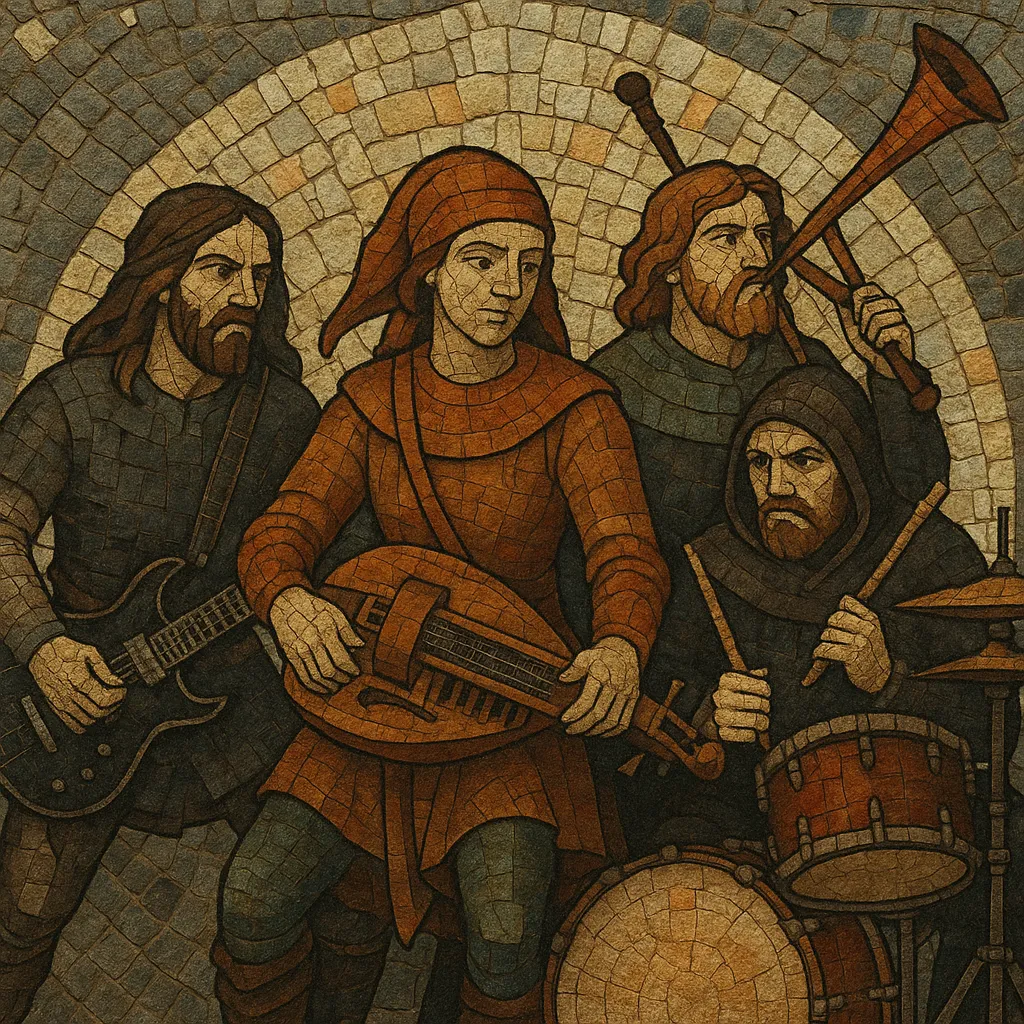Medieval rock is a fusion of rock music with melodies, modes, instruments, and themes drawn from European medieval and Renaissance traditions. Bands typically combine electric guitars, bass, and drum kits with bagpipes, hurdy-gurdy, shawm, lute, cittern, and other period instruments.
The style favors modal melodies (often Dorian, Aeolian, or Mixolydian), drone accompaniments, dance rhythms derived from historical forms (estampie, saltarello, branle), and lyrics that reference minnesang, folklore, chivalric tales, or historical festivals. While some groups emphasize a folk-rock feel, others push toward a heavier, almost metal-adjacent sound, creating a theatrical and “festival” atmosphere that is both epic and danceable.
The roots of medieval rock lie in the long engagement rock and folk artists have had with early music. In the 1970s, British progressive and folk-rock acts occasionally drew on medieval/Renaissance sources, hinting at a hybrid approach. However, these were sporadic borrowings rather than a distinct, named movement.
The genre crystallized in Germany in the 1990s around historical fairs and the "Mittelalter" (medieval) festival circuit. Bands began mixing electric rock instrumentation with bagpipes, hurdy-gurdy, and shawm, and adapted melodies from medieval manuscripts and folk traditions. Groups like In Extremo and Subway to Sally helped define the sound and stagecraft—leather-and-mail costuming, pyrotechnics, and communal singalongs—turning medieval markets into major live-music hubs.
Through the 2000s, the scene expanded with acts such as Schandmaul, Saltatio Mortis, and Tanzwut, each staking out a different balance between folk-rock tunefulness and heavier, riff-driven power. The repertoire broadened from reimagined historical tunes to original songs that still leaned on modal harmony, dance rhythms, and archaic languages (Middle High German, Latin) or archaizing diction.
Medieval rock’s hallmark is the interplay of drone-anchored, modal lead lines (often carried by bagpipes or hurdy-gurdy) against modern rhythm sections. This sonic identity influenced adjacent scenes—particularly folk metal and pagan folk—by normalizing medieval instrumentation in amplified contexts. The festival-first performance culture also helped anchor the genre’s visibility beyond clubs and standard rock venues.
Today, medieval rock remains a fixture of European alternative and folk festival circuits, with a strong base in Germany and a growing international following. Bands continue to innovate through crossovers with metal, symphonic elements, and electronic textures, while keeping the core blend of historical color and contemporary energy.


